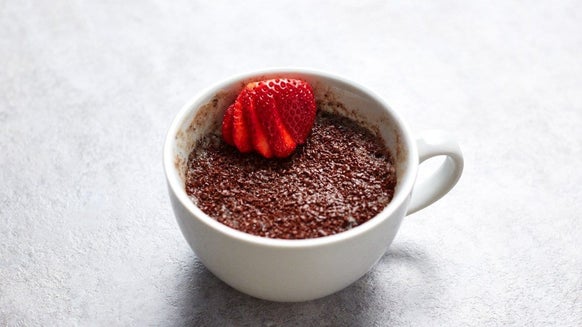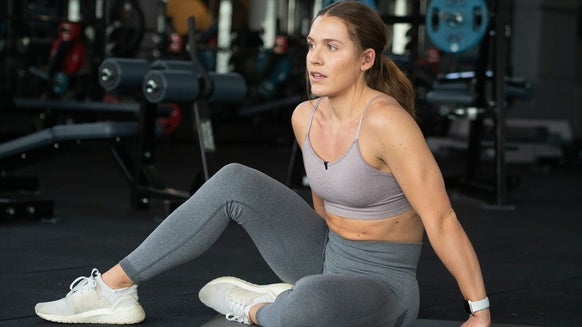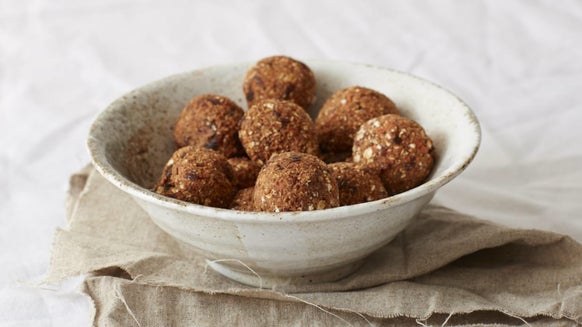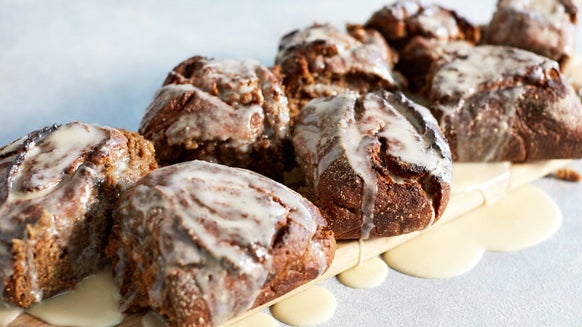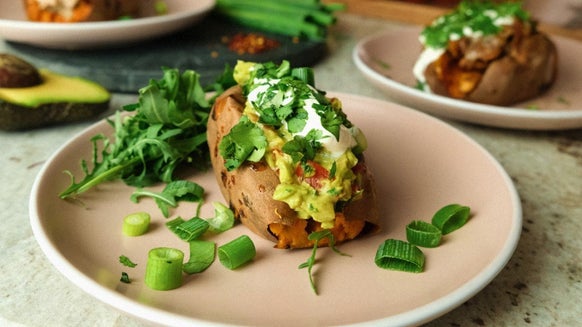
All too often, gym goers who seek aesthetic changes from working out will tend to focus on mirror muscles, i.e., neglecting certain posterior chain muscle groups. When it comes to the hamstrings, being well developed in this muscle group can help to create a more rounded physique, along with providing significant injury prevention in sports. While the hamstrings can be trained with compound exercises, isolations are often useful to ensure maximal strength and hypertrophic adaptations occur within the desired muscles. This article will focus on the hamstring curl and its application for aesthetics and performance.
In this article:
- The hamstring
- Hamstring curl technique
- Benefits
- Common mistakes
- Hamstring curl variations
- How to do a hamstring curl at home
- FAQs
The Hamstrings
The hamstrings are responsible for flexion of the knee and also contribute to hip extension. Due to this, they contribute significantly to athletic performance, playing a vital role in power production for sports such as sprinting, weightlifting and football.
The hamstrings comprise of three primary muscles - the semitendinosus, semimembranosus and biceps femoris (which has a ‘long-head’ that is bi-articular, meaning it crosses both the hip and knee joints. the hamstrings are key to aesthetics, performance and functionality. The hamstrings benefit posture, athletic performance, body balance, and can help with injury prevention.
Whilst key compound movements for the hamstrings include deadlifts, lunges, deadlift variations and bridges; the hamstring curl is the predominant isolation movement when looking to solely target the muscle alone. Performed seated or standing, the hamstring curl is a key exercise in any training program looking to develop the hamstrings or the legs in general.
Hamstring Curl Technique
The hamstring curl is a machine exercise that may be performed kneeling, seated, or standing, depending on the equipment in your gym. This exercise focuses solely on knee flexion, thus developing the hamstrings.
Set the loading pin to an appropriate weight. Take a seat on the machine with your back placed comfortably against the pad. As you position your lower leg against the pad of the extended lever, adjust the lap pad so that it is securely holding your legs in position. The lap pad should be between the knees and the hip. Whilst your toes are facing forwards, make sure that your legs are levered in with the machine comfortably. Whilst exhaling, flex your knees using just your hamstrings; this should pull the lever inwards. Continue to do so until the machine is pulled back far enough that it is almost hitting the back of your thighs. Pull your heels back towards your hips against the resistance of the machine. Slowly return to the start position in a controlled manner, then initiate the following rep.
Hamstring Curl Benefits
When utilising resistance training, it is important to ensure that your training is well-rounded, whether it is for physique or performance. When well developed, the hamstrings are a very aesthetic muscle group, contributing to overall leg development. The performance benefits of direct hamstring training are that it can help to directly increase strength for hip dominant pulling movements such as the barbell deadlift and can even improve athletic performance for sports such as running or weightlifting. Finally, directly training the hamstrings can help to increase the length and strength of the muscles, ultimately helping to significantly protect the hamstrings from common injuries such as strains or tears, often seen in sports like football. Sufficient strength in the hamstrings can also contribute to increased passive control of the knee joint, minimising risk of injury for injuries such as ACL tears, which can be devastating for athletes.
Common Hamstring Curl Mistakes
Not Enough Stimulus
Due to the fact that the hamstrings are one of the largest muscle groups in the body, they should be hit with a crazy amount of volume! However, due to not being one of the ‘glamorous mirror muscles’ like the quads are, they get left with either the tail end of a workout or ignored and neglected altogether. In order to prevent this, be sure to apply a sufficient amount of exercises, sets and reps that will adequately stimulate the hamstring muscles, remember how important they are! If you have again found yourself neglecting your hamstrings, apply the priority principle. Next time you train legs, maybe start with hamstrings so that you are focused on them and have the forefront of your energy stores at hand to use for them.
Quad Dominance
Leading on from the previous point, as previously stated, the hamstrings often get ignored and neglected; however, this time we will assess how it will result in unsymmetrical legs and quad dominance. Training hamstrings will give the overall leg the desired shape and proportions that most are after. If you are a bodybuilder or physique competitor, a ‘Rear Double Bicep Pose’ or ‘Side Chest’ will never look complete if your hamstrings are lagging in comparison to the quads. However, if after the previously mentioned suggestion you are still struggling to combine quads and hamstrings into one workout, you can alternatively, create an individual session where you solely train and isolate the hamstrings, separate to the quads.
Injury Rates
The hamstrings are one of the most commonly injured muscles in fitness/sport today. Due to muscular overload (when the muscle is unprepared and stretched radically beyond its range of motion or presented with a sudden stimulus), quad dominance/hamstring imbalances, failure to adequately warm up and inactive glutes (Glutes and Hamstrings operate together simultaneously); the hamstrings are vulnerable to become injured. To prevent this, it is important to train them frequently as well as implying the following injury prevention methods; dynamically stretch before exercise and statically stretch after exercise, stay hydrated throughout training (One of the most common causes of injury and fatigue is dehydration), and apply hamstring injury prevention exercises (lumbar movements, bridges, swiss-ball curls and more).
Not Targeting Each Muscle
As mentioned previously, three muscles constitute the hamstring muscle and as a result; each muscle should be targeted sufficiently. Failure to do so could lead to aesthetic disproportions, muscular imbalances and therefore potential injury likelihood. The semitendinosus, semimembranosus, biceps femoris head can be individually targeted with the following exercise methods. Lying leg curls will emphasise the outer of the hamstrings or more formally known as the biceps femoris head, whilst the seated leg curls will target the inner side of the hamstring (The Semitendinosus and The Semimembranosus). Be sure to combine both exercises during your next hamstring workout.
Be Negative
An eccentric contraction, or the negative phase of an exercise, is the movement of a muscle whilst it is lengthening under resistance. Applying this method of eccentric work is known as eccentric training or negatives. Due to the fibres that make up the hamstrings, they are a muscle that react extremely well under the stimulus of eccentric work. The next time you perform the hamstring curl, aim to perform the concentric (inwards phase) explosively for 1 second, whilst you slowly perform the eccentric (releasing phase) for 3 seconds. Remember to squeeze at the point of contraction.
Hamstring Curl Variations
As some of the hamstrings are bi-articular, meaning they cross two joints – the knee and the hip, they must be trained accordingly. Variations help to ensure the muscles are challenged sufficiently in order to adapt to the stimulus that we are presenting, so along with progressing the load or other training principles such as the training volume or frequency, we can also introduce
How to do a hamstring curl at home
The hamstring curl can be performed using a resistance band at home. All you need is to anchor one end of a resistance band to a secure anchor point, then to perform the exercise as you would in a gym (using a chair or lying prone on the floor).
Hamstring Curl with a Ball
Start by lying on your back on a mat with your feet elevated on a Swiss ball, arms resting by your side. Raise your hips off the floor to rest on your upper body. Keeping your feet together and hips elevated, bend your knees to bring your feet in towards your glutes. Hold, then straighten your legs again to return to the start.
Hamstring Walk-Out
Lying supine on the floor, place your hands by your sides with your palms flat on the ground. Start with your knees flexed to 90-degrees, as if you are performing a glute bridge. From here, walk your heels away from your hips, pulling your heel into the floor on each step, in order to engage the hamstrings. See how far out you can make it, then walk back to the start position in the same fashion, pulling your heels into the floor.
Dumbbell Hamstring Curl
Lying prone on a bench, place a dumbbell between your feet, with your knees at the end of the bench. Ensure you are holding the dumbbell securely before slowly lowering until your knees are extended. Contract your hamstrings to return to the start position. Make sure you are holding on to the sides of the bench so that you do not fall off!
Nordic Curl
You’ll need a spotter here. Start in a kneeling position, with your spotter leaning on your ankles with their full bodyweight. Slowly lower your upper body towards the floor, contracting your hamstrings to slow your descent. - Use your hands to catch yourself, then push back up to the start position before initiating the following rep.
Hamstring Curl FAQs
How can you do a hamstring curl at home?
The best way to do this is with the hamstring walkouts, Nordic curls or with a resistance band, as mentioned above.
Are hamstring curls bad for your knees?
Hamstring curls can actually help to support good health in the knee joint, promoting the production of synovial fluid, thickening tendons and providing active support to help ligaments stabilise the joint.
Are seated or standing hamstring curls better?
This depends on your preference. The hamstrings can be in a more lengthened position for a seated hamstring curl, as the hip is flexed, and the knee is extended (in the start position). Ultimately, the intensity and exercise selection will determine whether or not you make the adaptations you want from your training.

Dan Speakman is our editor and level 3 qualified Personal Trainer. Having spent time in Australia, he has experience in planning and delivering exercise plans to beginners and advanced athletes — both in the UK and down under.
Dan has also run successful weight-loss camps across the UK, alongside regular training seminars, covering all areas of gym-based training. He also runs weekly fitness boot camps and spin classes.
When he’s not working, or in the gym, Dan enjoys travelling to sunnier destinations, eating out, and trying exciting new foods.

